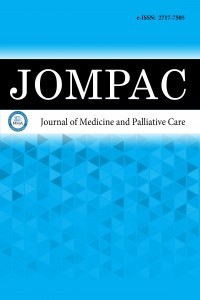1.
Giang DTC, Rajeesh G, Vaidyanathan B. Prenatal diagnosis ofisolated interrupted inferior vena cava with azygos continuationto superior vena cava. Ann Pediatr Cardiol. 2014;7:49-51.
2.
Bass JE, Redwine MD, Kramer LA, Huynh PT, Harris JHJ.Spectrum of congenital anomalies of the inferior vena cava:cross-sectional imaging findings. Radiographics. 2000;20(3):639-652.
3.
Celentano C, Malinger G, Rotmensch S, Gerboni S, Wolman Y,Glezerman M. Prenatal diagnosis of interrupted inferior venacava as an isolated finding: a benign vascular malformation.Ultrasound Obstet Gynecol. 1999;14(3):215-218.
4.
Tubau A, Grau J, Filgueira A, et al. Prenatal and postnatalimaging in isolated interruption of the inferior vena cava withazygos continuation. Prenat Diagn. 2006;26:872-874.
5.
Bronshtein M, Khatib N, Blumenfeld Z. Prenatal diagnosis andoutcome of isolated interrupted inferior vena cava. Am J ObstetGynecol. 2010;202(4):398.e1-4.
6.
Shahrouki P, Lee EW, Ruehm S. Polysplenia syndrome and sicklecell trait: extensive deep venous thrombosis from venous stasisand hypercoagulability. Clin Imaging. 2022;82:127-131.
7.
Xu Q, Sun HX, Xie JS, Wang JL, Pei QY, Zhang XH. Characteristicsand prognosis of interrupted inferior vena cava with azygouscontinuation. Zhonghua Fu Chan Ke Za Zhi. 2018;53(3):149-154.
8.
Vijayaraghavan SB, Raja V, Chitra T V. Interrupted inferiorvena cava and left-sided subrenal inferior vena cava: prenataldiagnosis. J Ultrasound Med. 2003;22(7):747-752.
9.
Moradi B, Moosavi NS, Kazemi MA, Tahmasebpour AR, FattahiMasrour F. A case of prenatally detected left isomerism andhemiazygos continuation of inferior vena cava. J Clin Ultrasound.2017;45(7):430-433.
10.
Sheley RC, Nyberg DA, Kapur R. Azygous continuation of theinterrupted inferior vena cava: a clue to prenatal diagnosis of thecardiosplenic syndromes. J Ultrasound Med. 1995;14(5):381-387.
11.
Babaoğlu K, Doğan Y, Başar EZ, Usta E. Prenatal diagnosisof hepatic interruption of the inferior vena cava with azygos/hemiazygos continuation without structural heart defects: a caseseries. J Clin Ultrasound. 2022;50(6):795-802.
12.
Effler DB, Greer AE, Sifers EC. Anomaly of the vena cava inferior;report of fatality after ligation. JAMA. 1951;146(14):1321-1322.
13.
Mandato Y, Pecoraro C, Gagliardi G, Tecame M. Azygos andhemiazygos continuation: an occasional finding in emergencydepartment. Radiol Case Rep. 2019;14(9):1063-1068.
14.
Lambert M, Marboeuf P, Midulla M, et al. Inferior vena cavaagenesis and deep vein thrombosis: 10 patients and review of theliterature. Vasc Med. 2010;15(6):451-459.
15.
Kwan KJ, Li H-L, Chan YC, Huang J-X, Cui D-Z, Cheng SW.Venous thromboembolism in a patient with ınterrupted ınferiorvena cava and compressed azygos continuation: a case report andreview of literature. Vasc Endovascular Surg. 2023;57(6):643-649.
16.
Pasqui E, de Donato G, Camarri S, et al. Case report: inferior venacava agenesia in a young male patient presenting with bilateraliliac veins thrombosis. Front Surg. 2022;9:832336.
17.
Thomas SD, Ofri A, Tang T, Englund R. Endovascularreconstruction of an interrupted inferior vena cava. Int J SurgCase Rep. 2014;5(2):59-62.
18.
Raymundo SRO, Cabral VS, Cavalieri RF, Reis Neto F.Thrombolysis for deep venous thrombosis associated withinferior vena cava agenesis in a young patient. BMJ Case Rep.2019;12(5):e229840.
19.
Sagban TA, Grotemeyer D, Balzer KM, et al. Surgical treatmentfor agenesis of the vena cava: a single-centre experience in 15cases. Eur J Vasc Endovasc Surg. 2010;40(2):241-245.
20.
Parsa P, Lane JS 3rd, Barleben AR, Owens EL, Bandyk D.Congenital agenesis of inferior vena cava: a rare cause ofunprovoked deep venous thrombosis. Ann Vasc Surg. 2015;29(5).

